Often, when it comes to traveling, I am underwhelmed by ‘must see’ sights that everyone else seems to love. At Yellow Stone, I didn’t find Old Faithful to be particularly punctual or impressive. In Cambodia, I preferred several temples over Angkor Wat. Even in Thailand, I preferred Elephant Nature Park and Ayuttaya over the crowded beaches. Agra, however, was the exception to that rule…Although I arrived at the Taj Mahal expecting to be underwhelmed, within minutes, I realized I had underestimated India’s most iconic building.
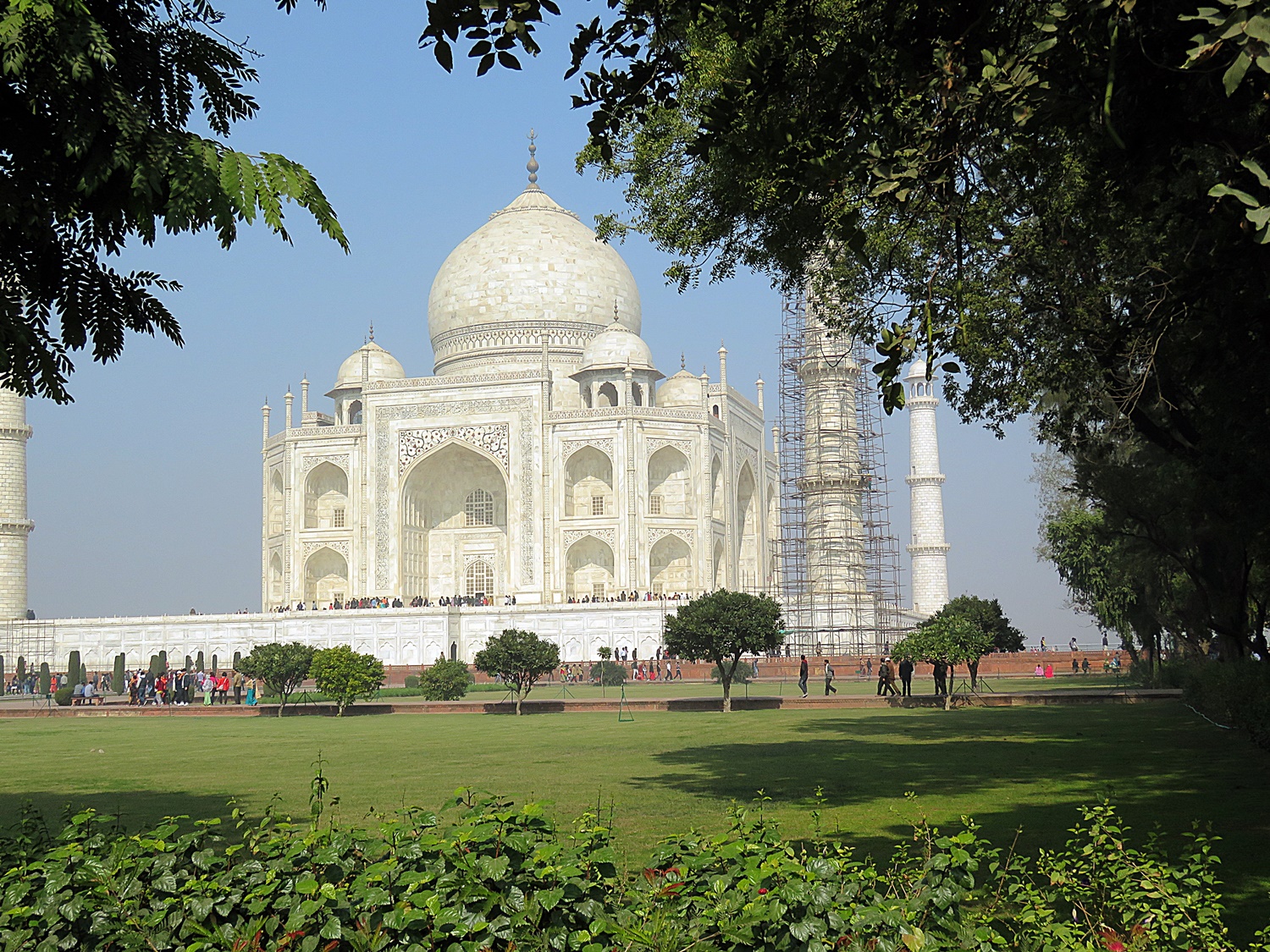
We traveled for hours in a thick fog and Dave and I were both very worried that the visibility was so bad that we wouldn’t even be able to see the building. Luckily, as the sun climbed in the sky, the fog dissipated and we arrived at Taj Mahal’s front gate with beautiful blue sky above us.
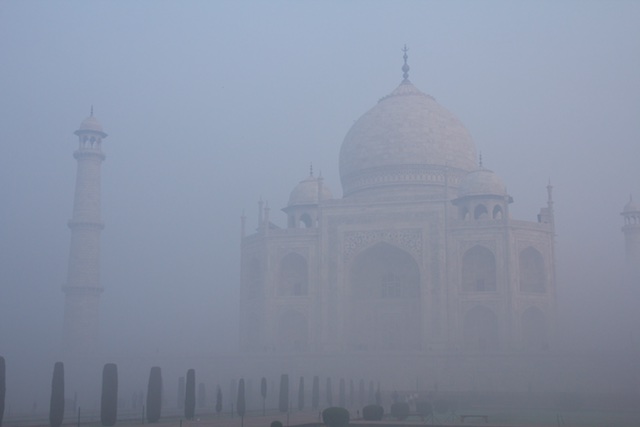
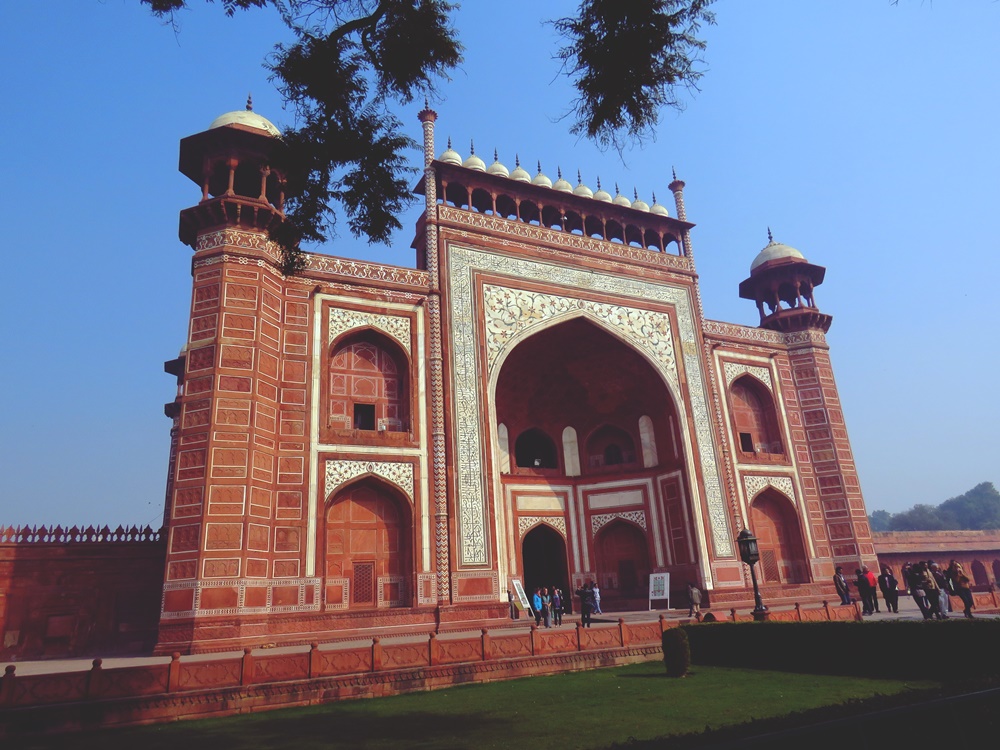
We were provided with a tour guide while we were in Agra. I don’t typically like guides, because they can take so much away from the experience (I hate being shuttled around) but this one was pretty good. He offered a lot of information about the structures themselves, although we did find out later that some of his facts weren’t exactly true (more on that later). The things that were true, though, made it worthwhile having a guide at this particular attraction.
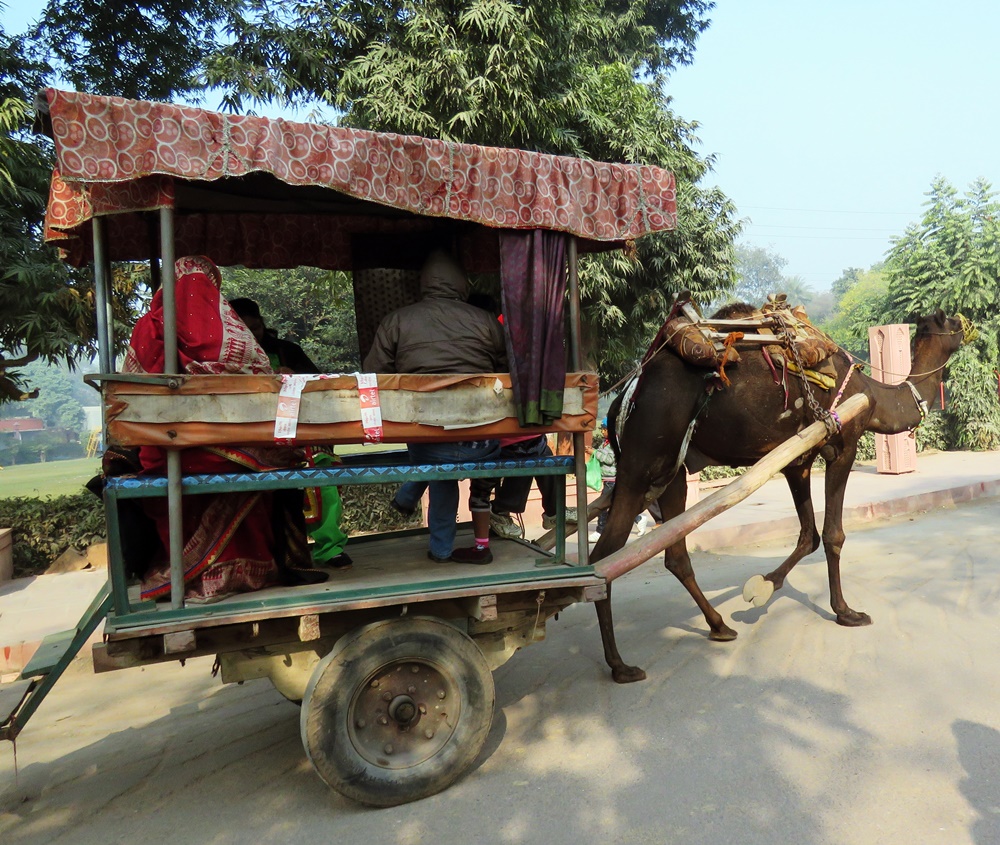
Now, about the the building and grounds themselves…
In 1631, the Mughal emperor of India, Shah Jahan, lost his beloved wife during the birth of their 14th child. After spending a year in secluded mourning, the emperor hired an architect to design a beautiful building both to commemorate his late wife, and to act as her final resting place. The architect did his job well and today, thousands of tourists flock to the Taj Mahal to visit the burial sight of Emperor Jehan and his wife, Mumtaz Mahal.
Now that you have some history, I should explain why this UNESCO World Heritage Sight is so renown. I like lists, so let’s do it that way…
#1 – The Optical Illusions
When you are (finally) done with security and have bought your tickets and paid for your camera fees, you make it through the front entrance. This is when you first see the Taj Mahal. It looks enormous and very close, and you can’t quite figure out why you hadn’t seen it behind the front gate.
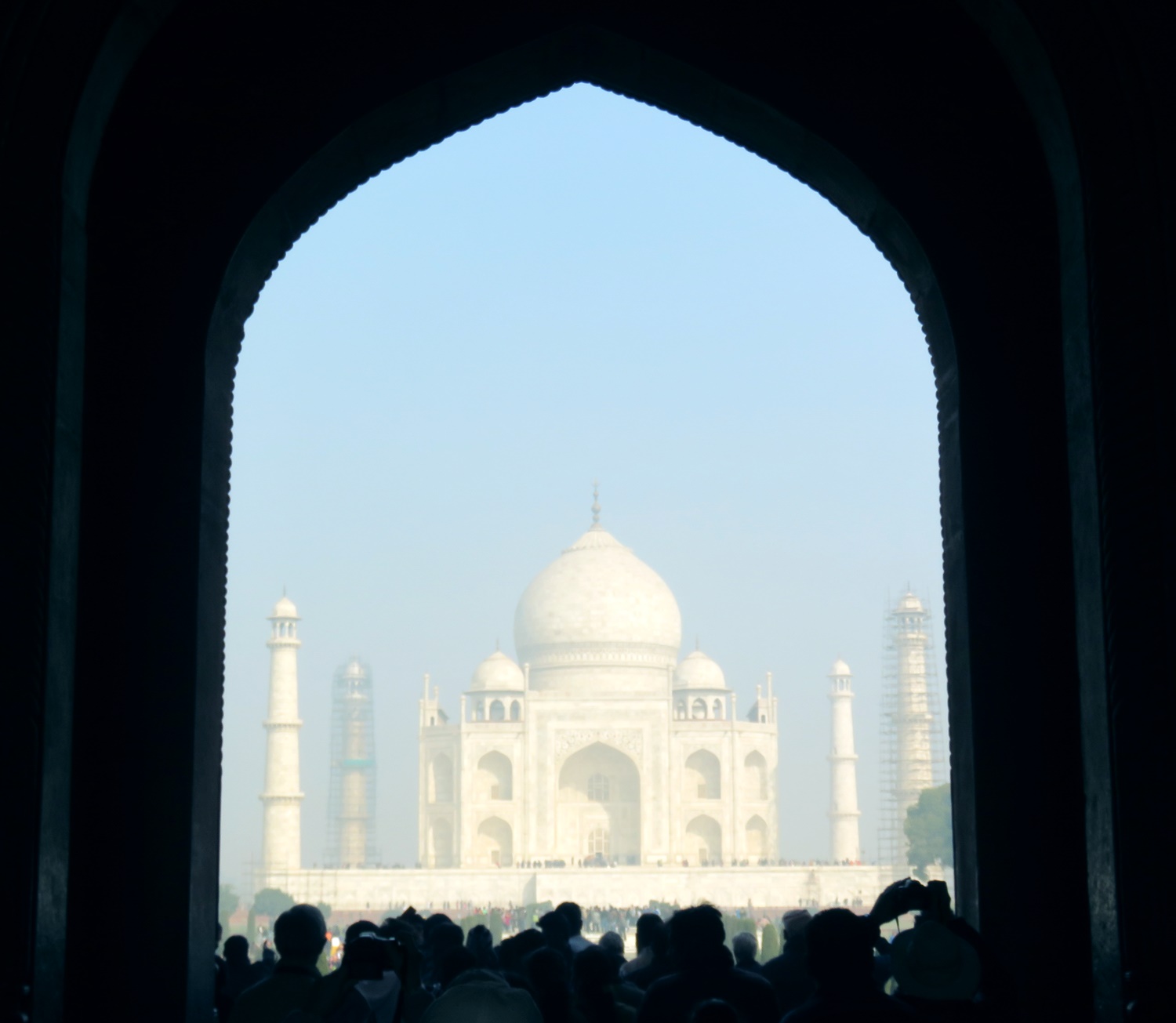
But as soon as you step through that doorway, you realize that there is quite a bit more walking to do before you actually get TO the building itself. The doorway just makes it look closer than it really is.
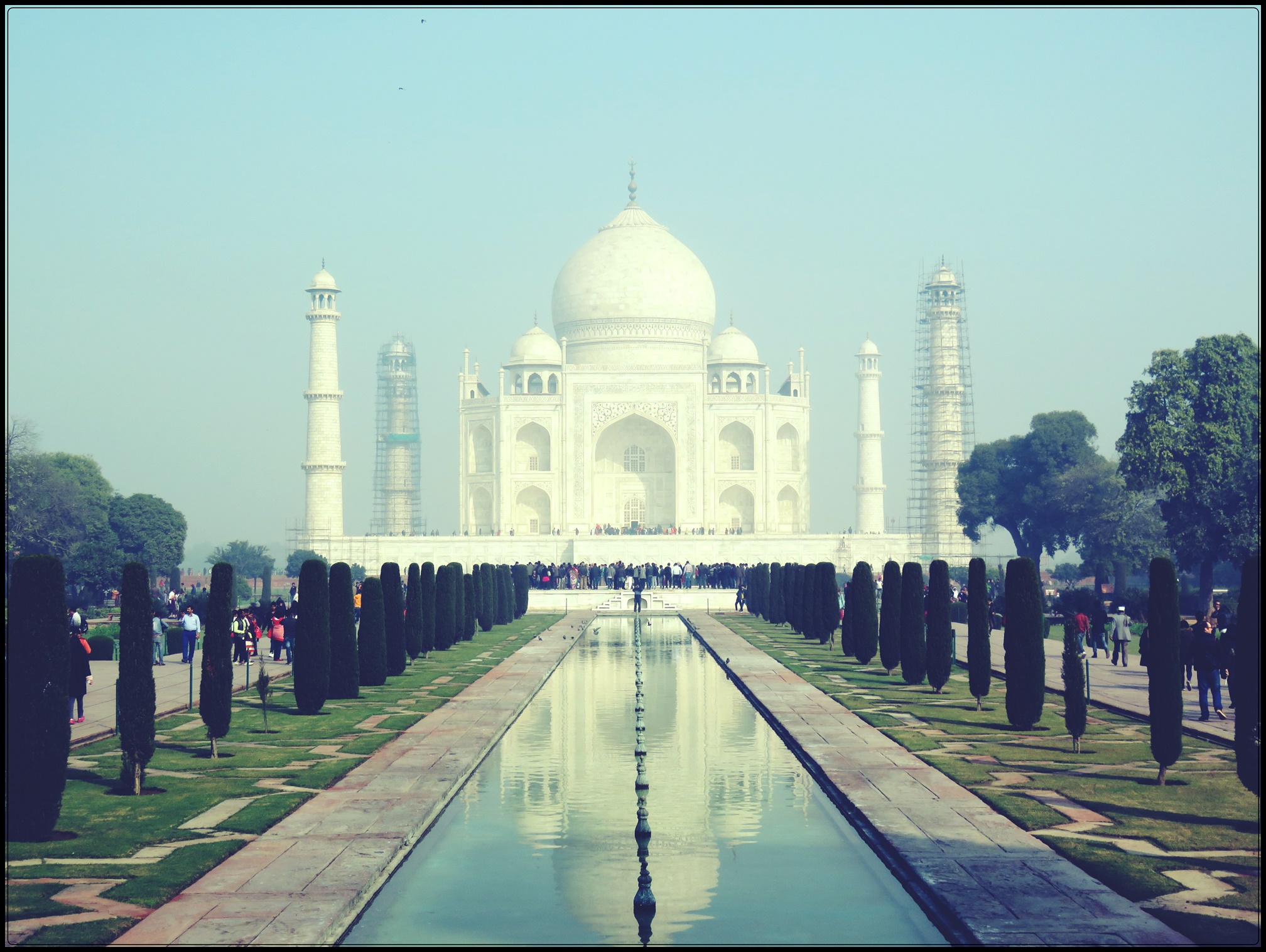
There are also optical illusions on the building itself. For example:
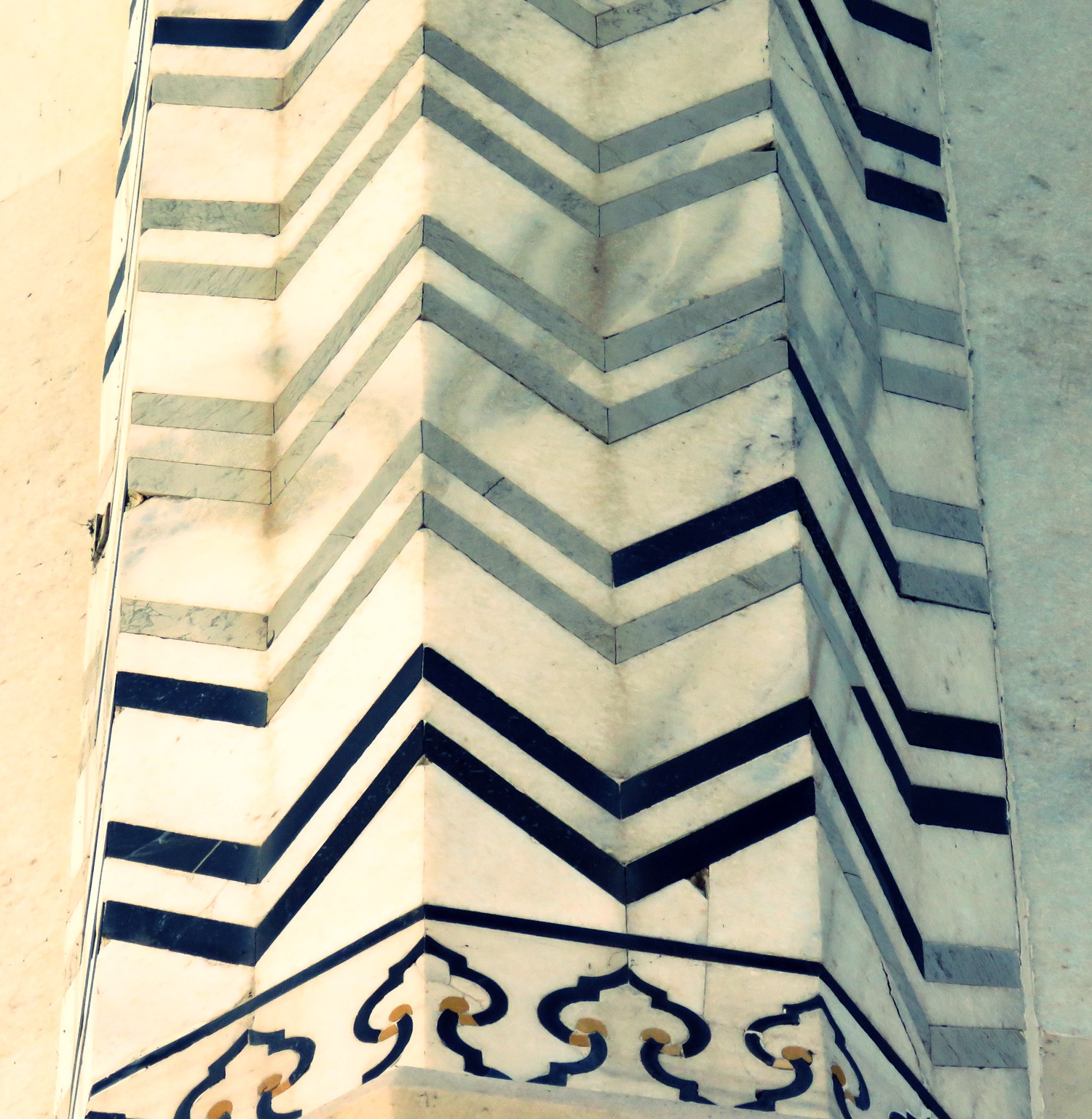
More interesting yet, depending which time of day you visit the hall, it changes colours! I had always seen the Taj Mahal in pictures during sun sets, so it surprised me a lot when I saw that it is white! The entire building is made of high quality marble. The material is actually partially translucent, so it reflects light in some very interesting ways.
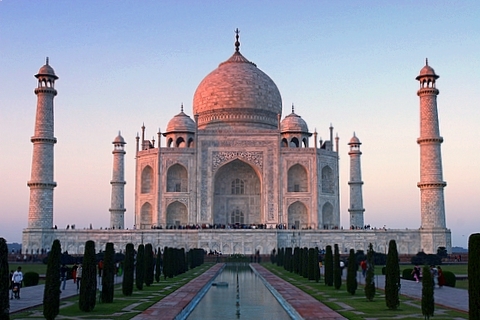
This marble is very valuable and delicate, so India has come up with an interesting cleaning regiment for their famous landmark. Instead of washing dust and dirt off with a pressure washer (or a harsh equivalent) they cover parts of the building with mud, and then gently wipe it away by hand. The mud helps to delicately scrub away any built up pollutants on the Taj Mahal’s pristine facade. They were working on 2 of the towers when we were visiting.
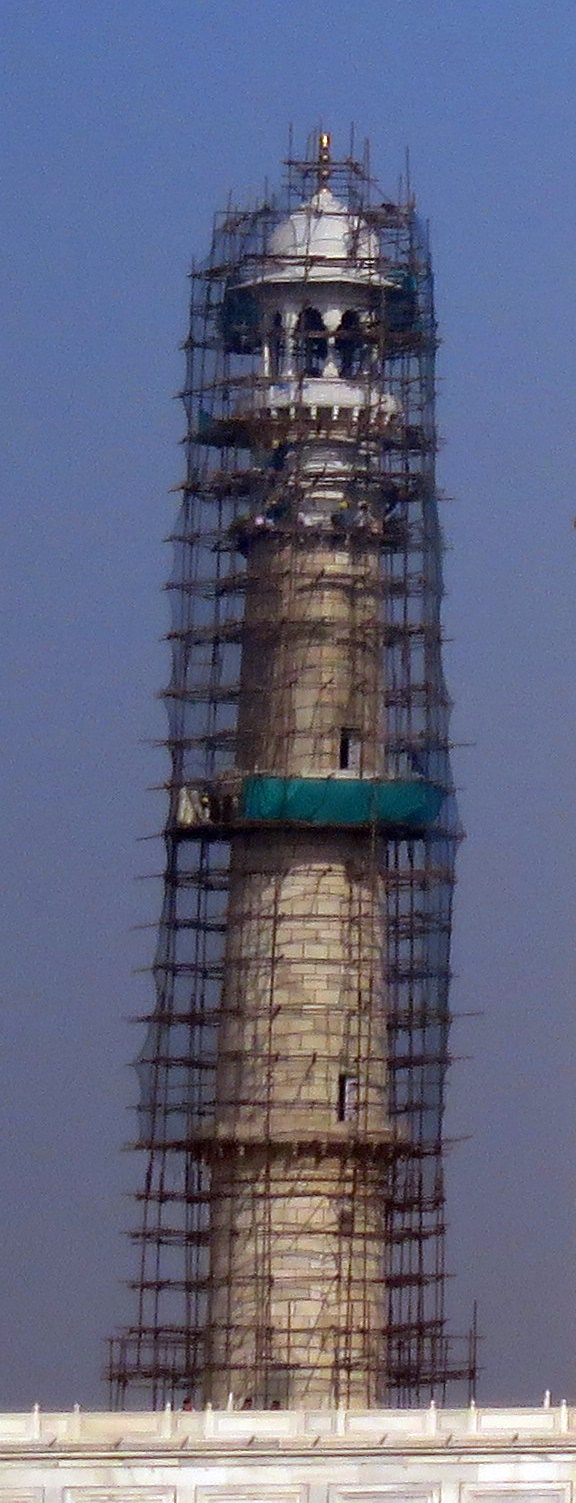
#2 – The Symmetry
Every aspect of this building is symmetrical genius. From the trees, to the pools to the mausoleums that stand on either side of the main building, the Taj Mahal is balanced. As you walk through the gate, you are met by a long pool that leads up to the Taj Mahal itself. The line in the middle of that pool runs directly to the center of the main building, making for perfect picture taking. Even the most amateur photographer can get a straight picture if they know where to look.
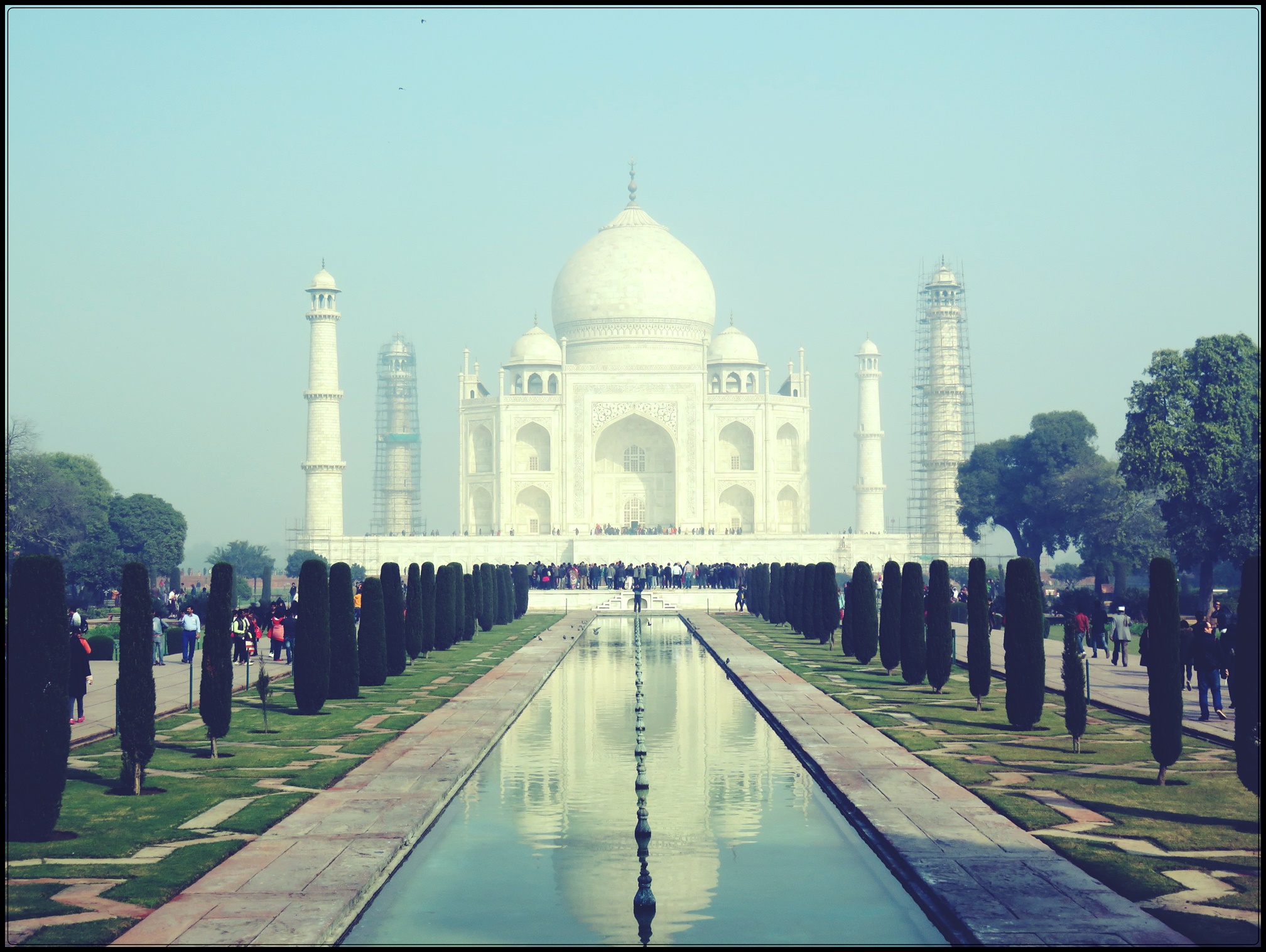
And everything from the trees to the stone steps to the pools on either side are mirrors of themselves. It’s really quite impressive because as long as we were with our guide, he never seemed to run out of things to show us that were perfect mirrors of one another. Both inside and outside of the building, everything from the art to the pillars to the shape of each room is a perfect reflection of the other side.
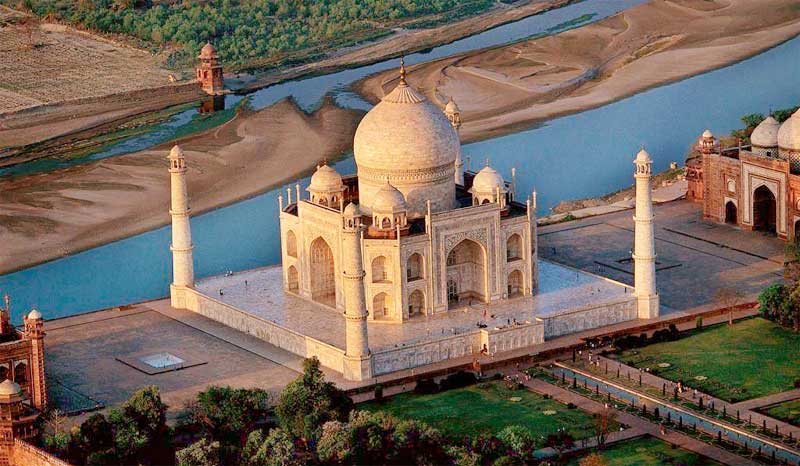
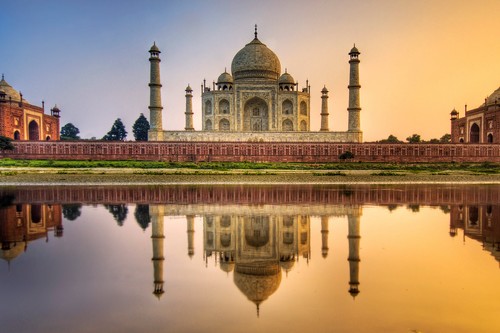
But wait! I’ve saved the best for last!!!
#3 – The Inlay Art
What impressed me the most about this incredible structure wasn’t the symmetry or the marble. It was actually the art and how that art was made.
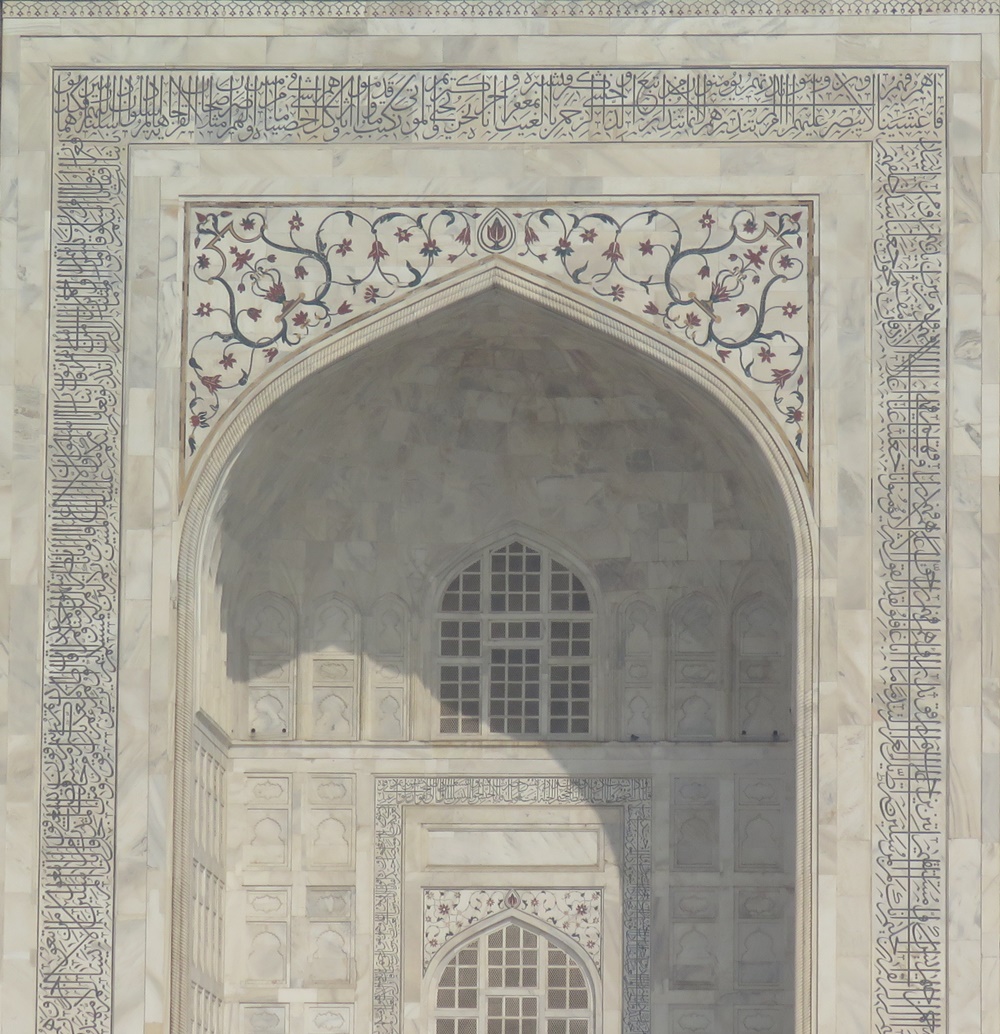
Now, the Islamic writing around the arches is painted on…but all of the other art you see…the flowers and vines…that’s not paint!
Every piece of those flowers and vines are actually made of precious and semi-precious gems. Here’s how it’s done…
The high quality marble that was used to make the Taj Mahal was carved into by artists. The designs were chosen ahead of time, and gems were brought from as far away as China and Egypt to complete the task. The gems were sanded down to fit into the holes in the marble and then glued into place. So instead of having paint all over the Taj Mahal…you have incredibly detailed inlay work.
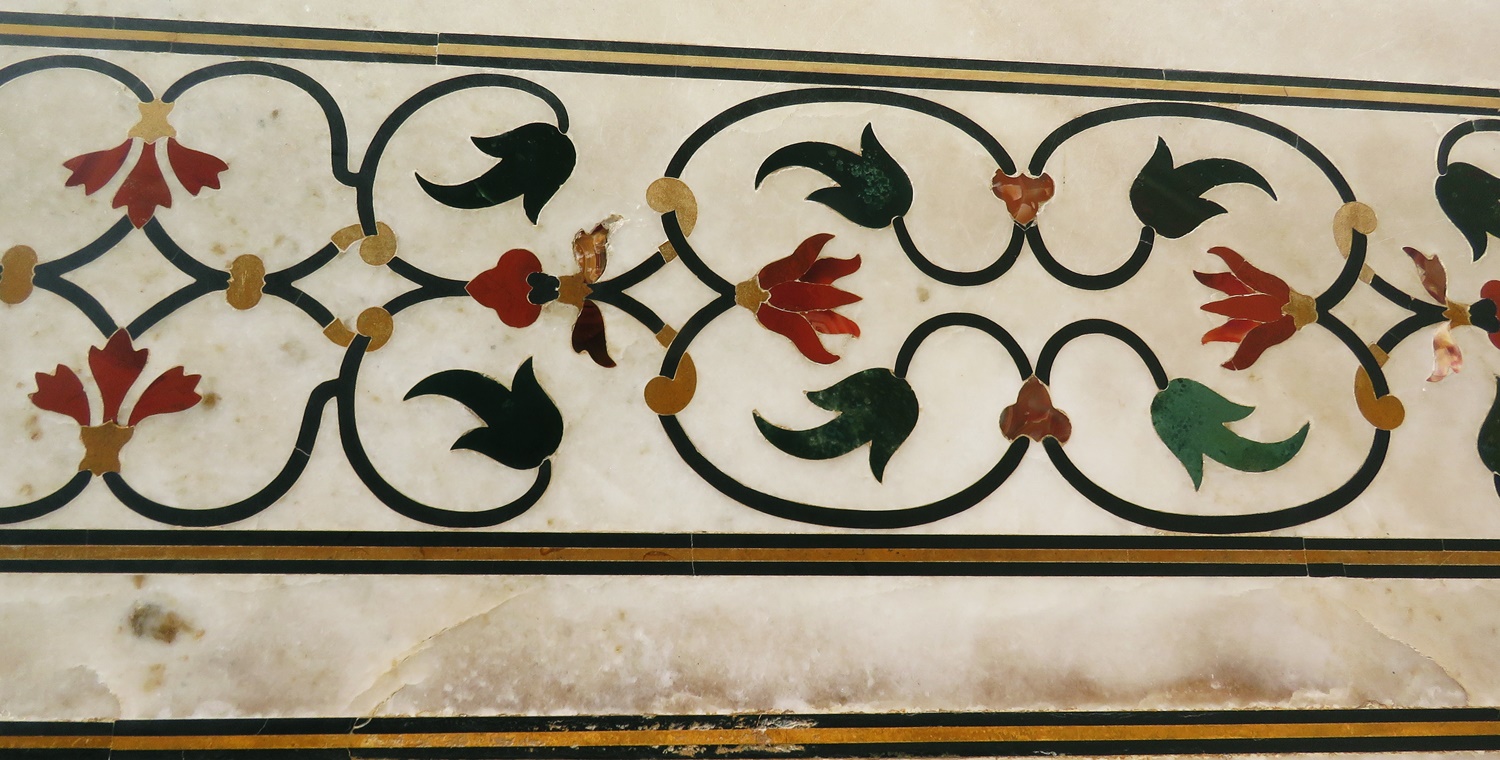
We went to a factory where this form of art is still being practiced.
This form of art is called Parchin Kari in India or Pietra Dura elsewhere. In order to decorate the Taj Mahal, Emperor Jahan had Jade brought from China, Sapphire brought from Sri Lanka and even Turquoise from Tibet. The results are magnificent. Not only is the art beautiful, but when the light hits certain gems just right…the whole building sparkles!!!
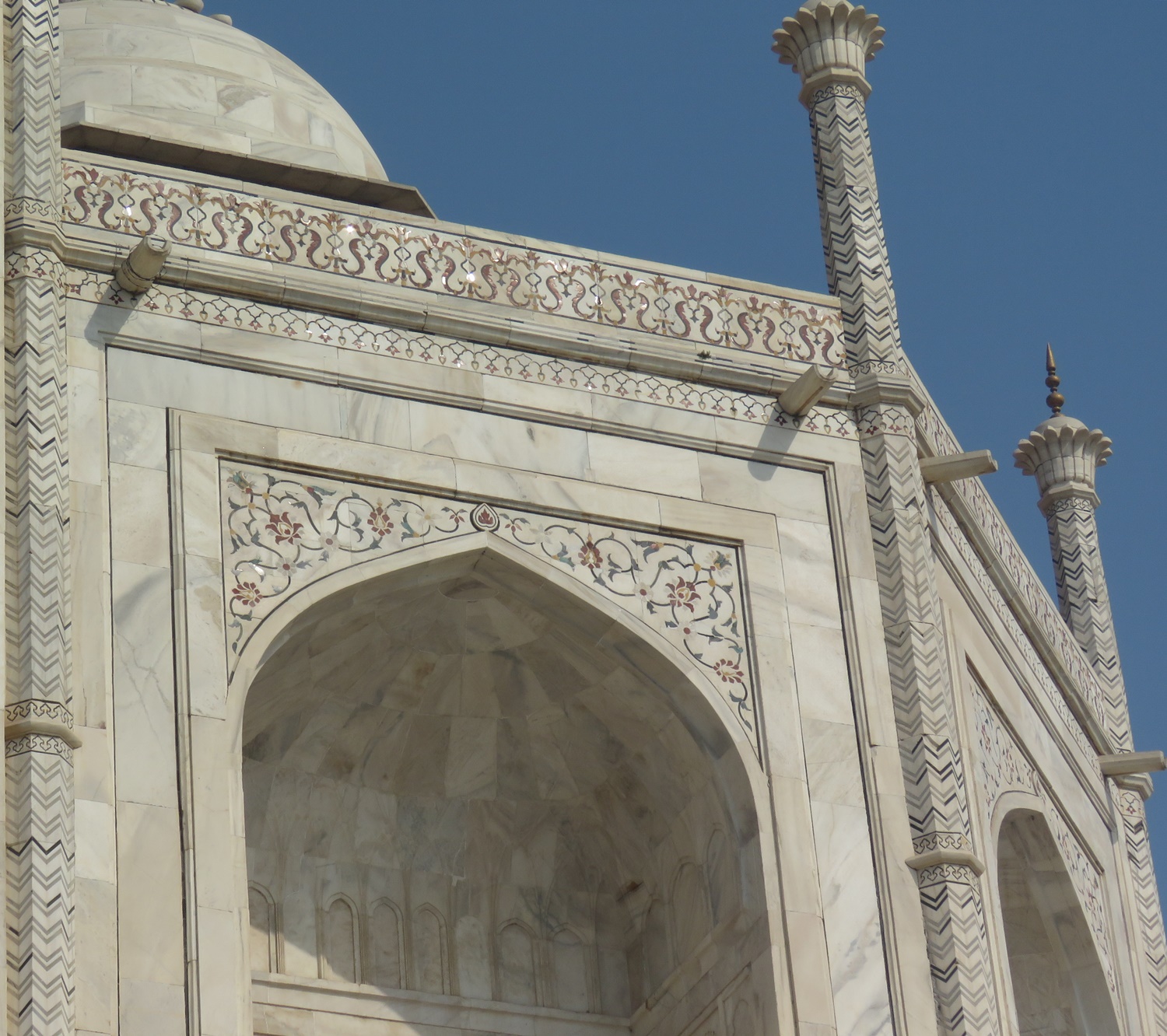
Sadly, because this building is so famous, it gets a lot of attention from thieves. Repair work is almost always being done on the building because tourists try and remove stones and are sometimes even successful!
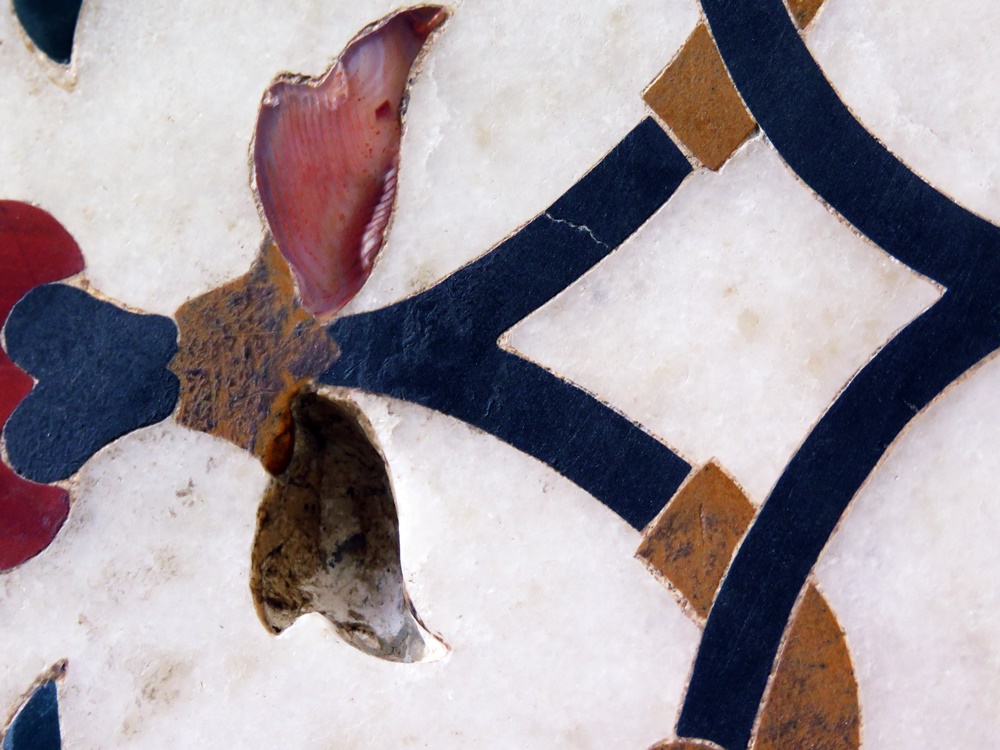
Myth vs Facts
India has worked hard to protect this building, and during the second world war and wars with Pakistan special measures were taken to keep the building from being bombed.
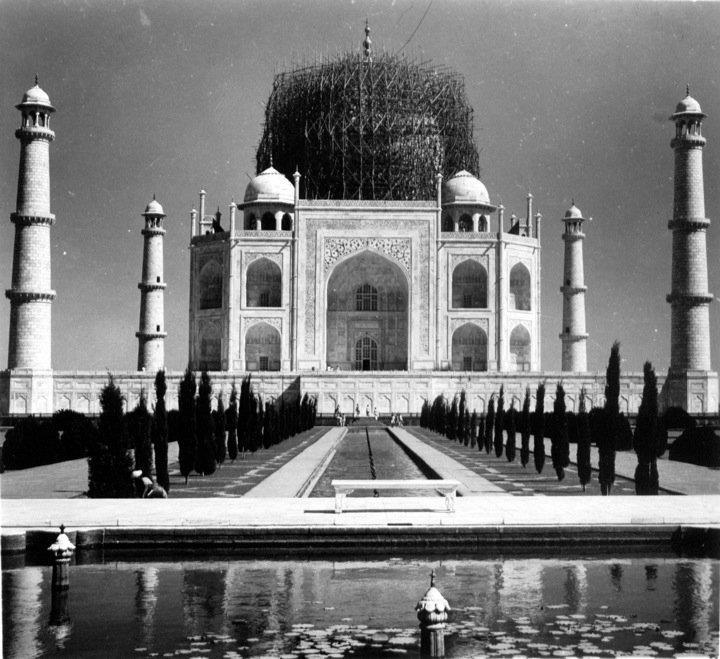
Of course, this is one of the more interesting TRUE stories about the Taj Mahal. I learned later on that some of the other interesting stories our guide told us are completely fabricated. For example, there were never plans to build a second BLACK Taj Mahal across the river. It is a myth being perpetuated by tour guides in India.
Another myth that has added interest in the Taj Mahal states that the Indian Government had plans to demolish the building and to sell the marble. This story has no more truth to it than the black Taj story does, but it continues to be told because it increases interest in the famous landmark.
To me, I think the building is fascinating enough WITHOUT fabricating additional stories. But hey…I suppose they know what they’re doing…there’s no such thing as bad press, right?
After visiting the Taj Mahal we also went down to Agra Fort, which was built during the same period for the same emperor’s family. It wasn’t as interesting as the Taj Mahal itself, but it was still pretty neat and definitely worth some photos! (click on the photos for captions and explanations)
I have 1 last post that I’m still working on for India. I hope to have it up soon!
If you found this blog post interesting, please feel free to share with your friends. As always, comments and likes are always appreciated (and make me feel a little less like I’m talking to myself;) )
















